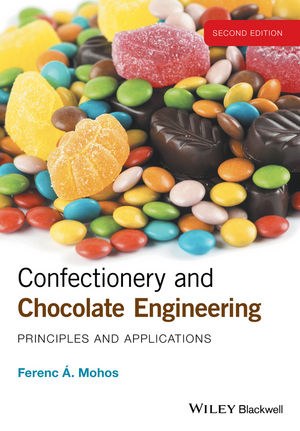Candy Industry was recently able to talk with Edward Smagarinsky, group product manager (mogul), tna solutions, about sustainability in the confectionery industry.
Liz Parker: How can food producers reduce waste and contribute to a Circular Economy, while maintaining a healthier bottom line?
Edward Smagarinsky: Technologies enhancing production efficiency and minimizing the use of resources contribute to both a healthier bottom line and more sustainable processes. For example, having complete control over the production process is key to waste reduction. Candy processing and packaging requires heavy usage of electricity, gas, and water, and any inefficiencies will lead to waste. Poor maintenance, running machinery when not required, or operating fully lit plants during shutdowns are all avoidable issues and working with an expert supplier can help to identify these elements and deliver appropriate solutions.
The single most effective step producers can take to boost efficiency is to focus on line integration. Every one of our processing and packaging solutions is designed to work in harmony with one another, both physically and through smart connected operating systems. This has a profound effect because it minimizes all the factors that can slow down production. For example, with complete line integration, blockages or errors in the conveying system can be automatically communicated to the product preparation, cooking, depositing and finishing, preventing product waste, and alerting operators to the issue before it can cause costly delays.
Sensing equipment, such as flow meters, motion sensors, and kWh meters can easily be integrated into any existing Programmable Logic Controller (PLC) systems, for example, giving operators greater visibility into relevant plant data to ensure energy is used only when and where it’s needed. Capital equipment itself is also being designed to deliver efficiencies through state-of-the-art built-in features. The latest vertical form fill and seal packaging systems, for example, combine improved productivity with intuitive energy saving modes, which all feed into a healthier bottom line. As more equipment solutions begin to incorporate smart control software, manufacturers will be able to take a holistic view of their processing and packaging operation, identifying new ways to make their lines run as smoothly, and sustainably, as possible.
LP: How can food producers optimize energy, raw material, and ingredient use during production processes without compromising on product quality?
ES: In addition to the above-mentioned solutions, candy producers should have a closer look at the auxiliary features of their processing and packaging equipment. For example, integrated stripper tube-closers and product in-seal detection (PISD) systems help minimize the chance of sugar or candy pieces becoming trapped in the pack seal area. By implementing these solutions, brands can limit pack rejections and unnecessary plastic waste—building a more profitable operation in the process, while delivering consistently high product quality to consumers.
LP: Can you briefly elaborate on COP27? How has it increased pressure on food producers to re-evaluate their production processing, including ingredient, material, and energy sourcing?
ES: The food industry was highlighted as a fundamental element in addressing climate change and creating a more sustainable future at COP27. According to the UNEP Food Waste Index 2021, around 931 million tonnes of food waste were generated in 2019, while globally about $400 billion is lost to food waste each year. To put it into perspective, if it were a country, food waste would be the third largest source of greenhouse gases behind China and the United States.[1]
As a result, there is a rising pressure upon food manufacturers, retailers, and consumers to find solutions to reduce it. For example, Augmented Reality (AR) technologies can mitigate levels of food waste during manufacturing by ensuring the right quantities of ingredients are calculated through virtual demos. This means that no resources are wasted, leading to greater levels of sustainability, while optimizing food production. AR ensures supply chain traceability and transparency by keeping detailed records and digital imagery of each food item and component used during production, creating a digital "birth certificate."
LP: What are some opportunities for solution innovations that support sustainable goals?
ES: One particular area of opportunity lies in the development of Artificial Intelligence (AI), Virtual Reality (VR), and Augmented Reality (AR) technologies. There are multiple ways that these technologies can be used to improve efficiencies and support sustainability goals. AR technology, for example, enables remote maintenance, installation, and the commissioning of production lines, reducing carbon footprint, and downtime.
VR technologies also allow manufacturers to create a digital twin—a digital model of their physical production line. This means operators can test potential settings changes on the virtual imitation prior to implementing them. This improves line efficiency, while reducing potential risk of disruption to manufacturing processes in the future, creating energy and resource savings and greener operations.
Artificial Intelligence (AI), with its ability to seamlessly integrate different line components and pre-set modes throughout the production line, allows manufacturers to run their food processing and packaging systems at a consistent speed, without bottlenecks. This synergy enhances the quality of the end product and ensures high levels of efficiency, further enhancing sustainability.
Furthermore, AR, VR, and AI technology have the potential to provide transparency and improve customer trust and loyalty. Footage taken at farms, plantations, and food production halls allows brands to create AR experiences where customers can take part in a virtual walk-through of these facilities, taking a closer look at each piece of equipment and individual phases of the sourcing and manufacturing process.


.png?t=1675700171&width=1080)







